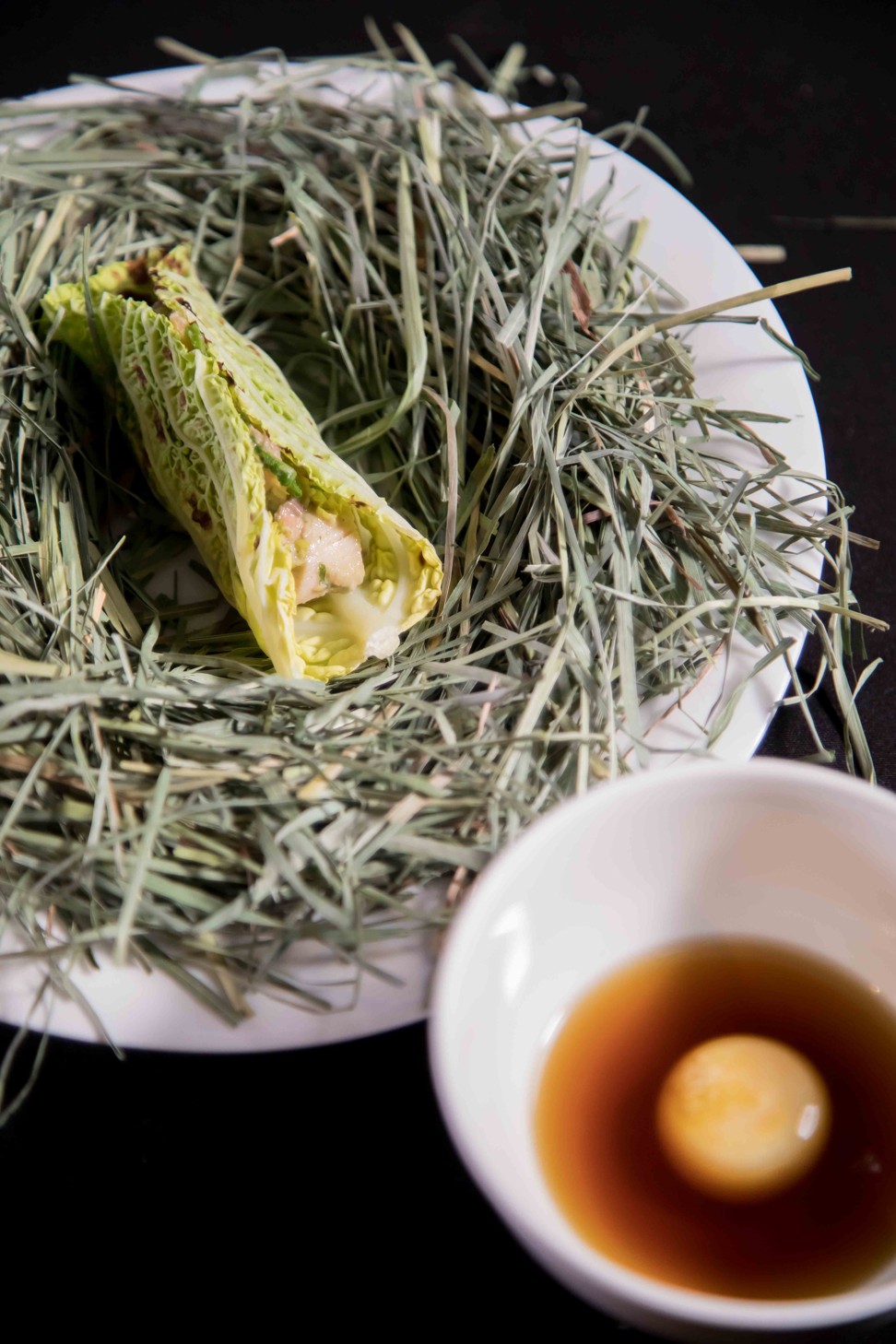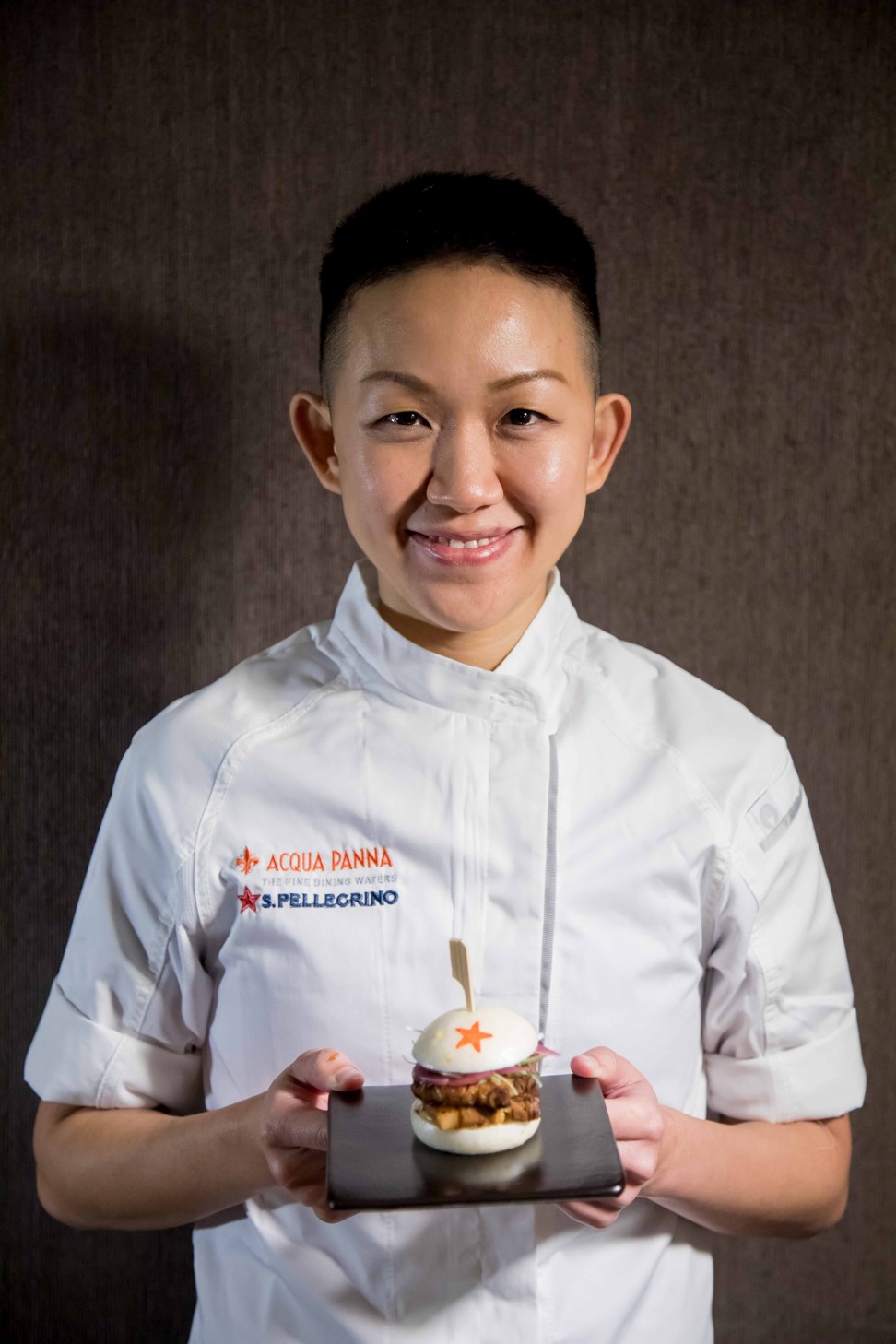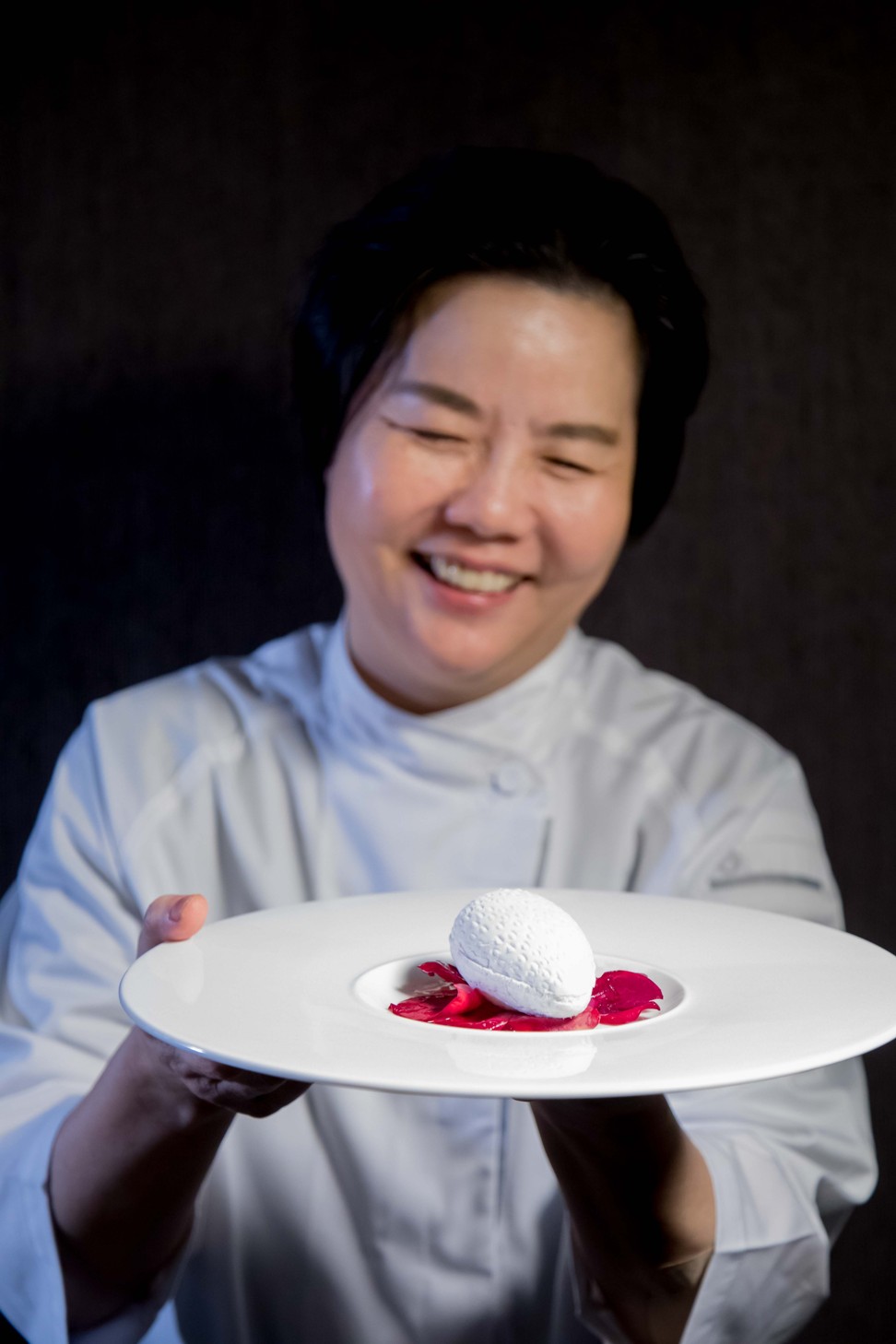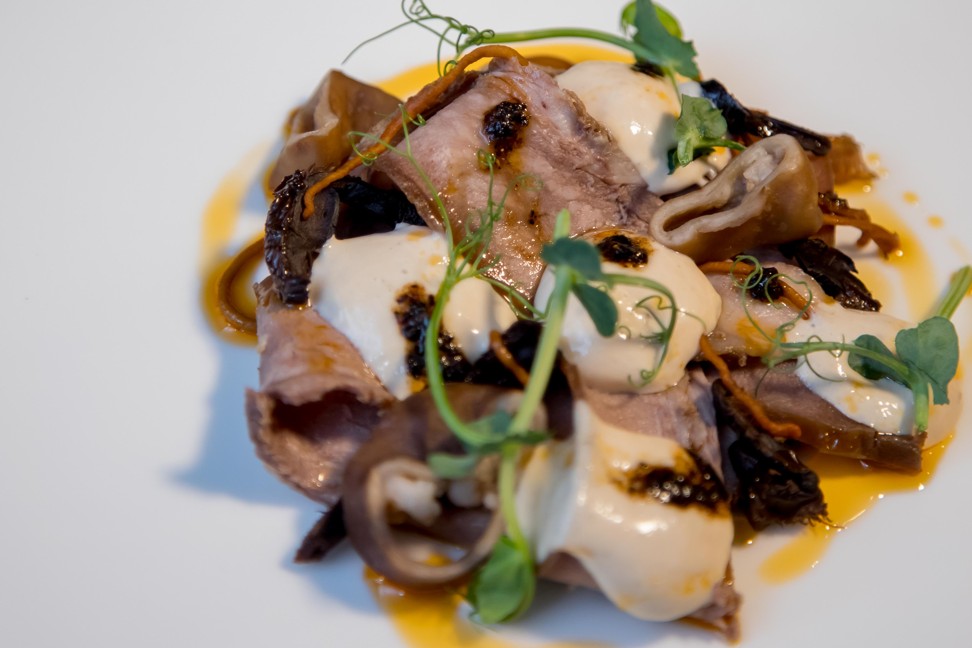
Top female chefs on working as women in male dominated food industry and falling in love with food at Taipei summit
- Chefs including Margarita Forés, May Chow and Ana Ros told personal stories about working in a men’s world at a food summit in Taipei
- Each chef also prepared their own personal dish for the event, showcasing their unique skills and backgrounds
It is two days before the Taiwan presidential election but the Regent Taipei hotel is too busy with another major event to worry about any post-election parties in its five-star ballroom.
The hotel is hosting the “Inspirational Women of the Era Summit”, a combination culinary event, discussion panel, awards ceremony and glitzy gala dinner celebrating and recognising a number of top influential female chefs and food professionals in Taiwan and elsewhere.
Underwriting the event is mineral water brand San Pellegrino, and this summit is part of its 120th anniversary celebration. The underlying agenda might be to sell water, but it doesn’t deter from the effort to promote greater gender representation in the food industry.

During the afternoon talks, each chef was encouraged to recall her own beginnings and emergence. For Ros, she fell into cooking after falling in love.
“I followed my heart and not my brain and my parents were very upset,” the Slovenian said of her decision to not go into diplomacy like her family, and instead take over her husband’s family’s restaurant. “Sixteen years ago when I started, the big problem was our restaurant was so far away, we had no suppliers coming into the valley. The only way was to knock on doors and ask local producers to share with us.”
Interestingly, none of the panellists initially wanted to focus on the politics of sexism in the food and beverage industry. Forés mostly detailed her well-known obsession with Italian cuisine and the challenge of appeasing her Mediterranean palate with the Philippines’ preference for sweet and sour flavours.
Canada-born Chow was the most political, framing her narrative from a non-white, non-male perspective.
“An inspiration was watching Yan Can Cook,” she confessed. “I think, is it because [Martin Yan] was the only Chinese person on TV? Food connected to me emotionally. It’s something about the textures – the holding and making things by hand – that really sung to me.”

Equally personal was each chef’s dish for the gala, which, in addition to San Pellegrino water, was paired with Italian wine from Ethica Wines. Speaking through her food, Chow delivered a Hong Kong street food variation of vitello tonnato (veal with tuna sauce), serving veal tripe with Yunnan wild fungus, and a veal and tuna foam. On the side was a Chow signature of pork belly bao.
Forés unveiled a mash-up of southern Italy and Southeast Asia, placing a piece of red snapper atop a pool of blue crab, coconut cream and batwan leaves, with shavings of bottarga di muggine – salted and dried mullet roe – for extra umami. In place of arborio rice, she used adlai (pearl barley), an underrated grain with a slippery texture and a forgiving al dente bite. The dish is certainly flavourful but the excessive sauce raised the question: is it a risotto or laksa with rice?
Ros impressed diners using a Taiwanese rooster for a two-part dish, both of which were variations on a nest theme. Firstly, crisp chicken skin was offered to scoop up a dollop of beurre blanc and caviar, followed by a hay nest holding a slightly charred cabbage leaf with mint-scented chicken meat, innards (heart, liver, kidney) and crab. As a chaser, there was a rooster broth with an egg yolk emptied before being refilled with hazelnut extract.
When I am cooking I am genderless. Of course, I am a girl, but consider me a chef, please.
Taiwanese chefs also played a big part in the dinner. Vanessa Huang of Taipei’s Restaurant Ephernité created a show-stopping table platter called The Journey of Water. Like a big-budget high school science project, it featured a clay mountain and dry ice clouds mimicking rain that flowed down to oceans and bubbled up in a spring.
The seafood on this mini-ecosystem was pretty good too. There were three kinds of roe with crème fraîche in a cup, a wonderful mini terrine of scallop and purple radish, plus the fun visual of a soy sauce marinated mini crab next to an edamame stone with lemon verbana mustard.
Wrapping up the meal, another France-trained Taiwanese female chef, Justine Li of Taipei’s Fleur de Sel restaurant, offered something sweet called Bubble in Taiwan. A quenelle of freeze-dried taro mousse rested on sour-strawberry-scented jus and rose petals, it was a dessert only an Asian chef would create. A Western kitchen would have smoothed out the taro completely, but Li kept its sandy, starchy integrity intact.

Following the feast, the chefs eventually revealed their true tales of cooking in a still primarily male industry.
“Imagine working in an office with 50 people and 49 of them were male. That’s how I felt,” Chow said. “Women and men need different things. I made the mistake of being very nurturing to a male staff [member] who was depressed. I asked if he was emotionally OK and he was so offended that I wanted to reach out to him. ‘I just want to talk about work,’ he replied.”
Forés’ Filipino kitchen is 60 per cent female, although she admitted that most are in the pastry and cold kitchens.
“Maybe it’s because I have a more homestyle approach to cooking that there are more female chefs,” she explained. “But now they do say to me, ‘Please, can I be on the hot food line?’ I hope that trend continues. It’s not about gender but what you are good at.”

As with any kind of perceived affirmative action, there is always potential backlash. It’s something Ros is keenly aware of.
“Honestly, when I see applications I don’t look at the gender,” she said of her 50/50 gender-balanced team. “I hire whoever can survive in the countryside and integrate into a team. If the kitchen was only girls, it can be difficult too. We are very competitive and we can be very difficult to hire.
“I have to tell you something else. Opening so many questions on gender balance can also be discrimination. It often happens to me. I get approached with patronising questions. People perceive a pink quota like, ‘Oh, she is number 38 on the World’s 50 Best list because she is a girl and they need girls.’ I argue, no, I am a chef. When I am cooking I am genderless. Of course, I am a girl, but consider me a chef, please.”

For Chow, part of her influence and activism is to raise up other female workers.
“I have a Nepalese lady who works for me who is amazing, but she never asks for a raise. But as her boss, if the guys ask for a raise, I give her an equal raise too. There have been times when I tell her she’s getting a raise and she asks ‘why?’ and I say it’s because you’re doing the same job as him. Sometimes we need to tell women – especially older women – it’s OK to ask for more.”

